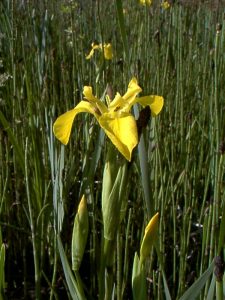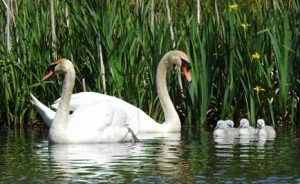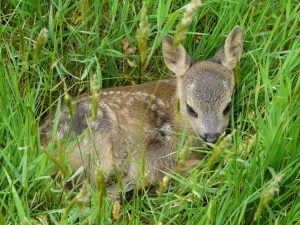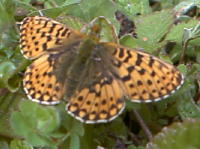
June is the month when thousands of tits fledge countrywide. The bushes and trees around the Park are full of young tits, nuthatches and wrens which will stay in their family groups. Swallow and house martin young hatch this month and the first of the young sand martins on the River Teign are due to fledge from their colonial burrows. Some of the older birds will manage to go on to rear a further two broods. The first swift was recorded on 9th May. Keep an eye out for nightjars in the evenings which arrive from Africa during the first half of May. Spotted flycatchers also migrate and come from central Africa in May. They can be seen sitting on a perch from which they watch for flying insects, periodically darting out to catch them. The great-spotted woodpeckers have been filling Stover with the sound of their drumming. The young have now hatched out and can be heard calling to the adults. Three tawny owlets were spotted in the arboretum – they are usually hard to spot with their camouflaged down. A green woodpecker nest has been recorded in the arboretum; although adults are seen occasionally in the Country Park they do not usually breed here. The great-spotted woodpeckers are more common, and their noisy chicks can be heard encouraging their parents to bring food. Song thrush chicks and chiffchaff chicks have already fledged. Regular sightings of bullfinch and stock doves occurred during last month. The stock doves can be seen at the aerial walkway and are slightly smaller than wood pigeons, lacking their white neck and wing markings. Stock Doves are shy birds and usually are not found where humans habituate. Keep an eye out for hobbies feeding over the lake and marsh. They spend the winter in Africa, arriving in Britain in late April and May to breed.


Keep an eye out for the young frogs and toads which will begin to leave the ponds and ditches in June. Newts will also be returning to land to feed after they have bred. They spend much of the day amongst the damp vegetation and under logs and stones.
The elder trees are just starting to flower – the flowers provide landing pads for hoverflies, wasps and beetles. Stag beetles are just one of the many types of beetle that emerge in June. Keep an eye out for glow-worms which will light up at dusk in rough grass. They tend to prefer areas where there are plenty of small snails, as this is what their larvae feed on.

The dragonflies are getting more noticeable. Joining the large red damselflies, the only species seen in April, are common blue, azure, blue-tailed, red-eyed, and beautiful demoiselle damselflies; and hairy, downy emerald, broad-bodied chaser, four-spotted chaser, black-tailed skimmer and emperor dragonflies.